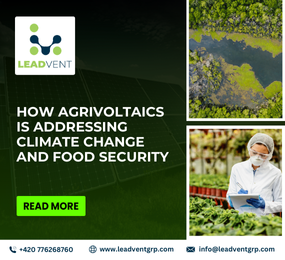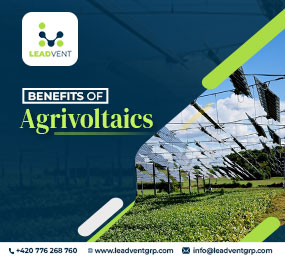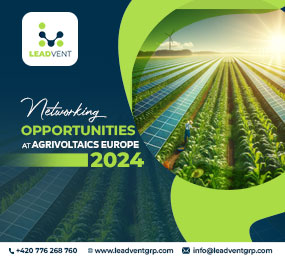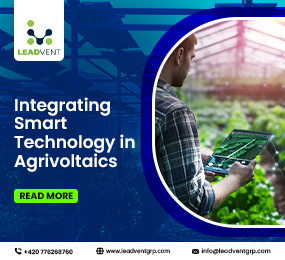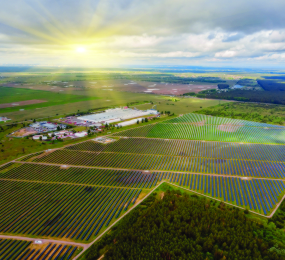Agrivoltaics, the merger of agriculture and photovoltaics, is not just a buzzword; it has transformed our perspectives on sustainable farming and energy generation. In the face of climate change and growing demand for renewable energy, agrivoltaics presents itself as a viable alternative. This article discusses the future of sustainable farming through agrivoltaics, highlighting its pros, challenges and real-world applications.
What is Agrivoltaics?
This is where agricultural processes are combined with generating solar power. Food crops can be grown on the same land which contains solar panels producing electricity at the same time. By doing so, farmers can earn extra cash while still contributing to renewable global demand for clean energy.
The Popularity of Agrivoltaics
Globally more countries are embracing agrivoltaic technology. SolarPower Europe predicts that integration between solar power and agriculture will remain a key element in European economic development. Inventorying their potential effects on energy use also helps enhance water conservation while raising crop yields, leading to sustainability in farming practices.
Advantages of Agrivoltaic Systems
Agrivoltaic systems elevate crop production by creating a beneficial microclimate through shade from solar panels, leading to healthier crops and higher yields, especially in hot regions. They also provide clean energy from renewable sources thereby reducing emissions related to global warming and ensuring economic stability for farmers who have an option of using or selling it. On top of these benefits, agrivoltaic systems can bring additional incomes to farmers thus enabling diversification for improved resilience against market or climatic risks.
FAQs
Which crops can be grown with agrivoltaic systems?
Agrivoltaic systems suit many types of crops, such as fruits, vegetables, or herbs. Factors like crop height, light requirements and local climate determine their suitability. Research work and demonstrations can assist in finding the best combination for each specific area.
How does agrivoltaics impact water usage in farming?
Water consumption during agricultural tasks can be drastically reduced, thanks to shading and evaporation reduction caused by agrivoltaics. More than anything else, this is important because it helps to conserve water which is very important when it comes to sustainability in arid regions that depend on agriculture.
Are there any drawbacks to agrivoltaics?
While several upsides come with agrivoltaics, they are not without challenges; these include cost implications associated with start-up phase investment, possible changes in farming practices and the need for continued maintenance work.
Agrivoltaics Figures
The green energy market is expanding at a fast rate. In 2012 only, 5 MW were set up but by the year 2020, approximately 2.8 GW are expected to be installed with projections of even reaching over 1,000 GW by the year 2050. These systems increase agricultural productivity and reduce energy costs, leading to higher crop yields and less irrigation use. Farmers can earn an extra three percent to four percent from leasing their land for solar farms. It also has the potential to cut more than eighty percent of GHG emissions by mid-century by reducing as much as one point five gigatonnes of CO2 emissions by 2050 hence supporting sustainability practices and biodiversity. Such a system of agrivoltaics will lead to strengthening both sectors: agriculture and power.
The Future of Agrivoltaics
Technological Progression
Ongoing research and technological progress make agrivoltaics appear promising for future applications in farming. The introduction of floating solar panels, bi-facial modules and smart shading systems further extends the reach of agrivoltaics technology applications into new areas such as those previously thought unsuitable for this kind of solar farming techniques. These techniques were aimed at enhancing efficiency while lowering the cost of integrating it into varied forms of agricultural landscapes.
Global Uptake and Cooperation
It could be implemented around the world regardless of the borders because there is a possibility that agrivoltaics might go global. Countries globally have been embracing it with some investing in demo projects. There should be international cooperation and sharing of expertise that will expedite the global implementation and upscaling of these systems.
Environmental Repercussions
Agrivoltaics also contribute to climate change mitigation through sustainable agriculture practices and reduction in carbon emissions. This integration helps build a food production system that is more resistant and ecologically friendly. By doing so, this approach addresses a range of challenges at the same time and promotes sustainability for the future.
Conclusion
This means that agrivoltaics is a revolutionary method of growing crops while generating solar energy for sustainable agricultural development. This technique also promotes green growth opportunities with economic returns. For more on this topic, one should attend the 3rd Annual AgriVoltaics Europe conference in Vienna where experts in these areas will deliberate on the latest developments. Do not miss the opportunity to acquire knowledge from leading researchers in organic farming practices.




